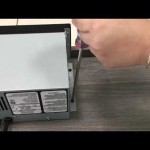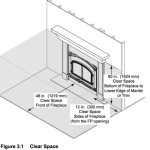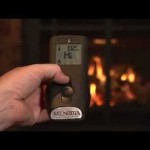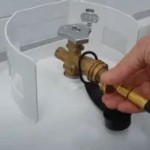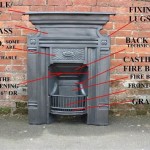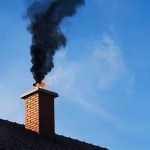Gas Fireplace Stove Insert: Enhancing Comfort and Efficiency
Gas fireplace stove inserts represent a popular and effective solution for homeowners seeking to upgrade existing fireplaces. These inserts transform drafty, inefficient open fireplaces into powerful and controllable heating sources. They offer a blend of aesthetic appeal, ease of use, and improved energy efficiency compared to traditional wood-burning fireplaces. This article provides a comprehensive overview of gas fireplace stove inserts, covering their benefits, types, installation considerations, and operational aspects.
A gas fireplace stove insert is essentially a self-contained heating appliance designed to fit into the opening of an existing masonry or zero-clearance fireplace. Unlike open fireplaces which lose a significant amount of heat up the chimney, gas inserts are closed combustion systems. This means they draw combustion air from outside the home and vent exhaust gases directly outdoors, maximizing heat output and minimizing drafts. These inserts are powered by either natural gas or propane, offering convenience and eliminating the need for wood storage and handling.
The selection of a suitable gas fireplace stove insert involves several key considerations, including the size and style of the existing fireplace, the desired heating output, and the available fuel source (natural gas or propane). Proper sizing is critical to ensure efficient heating and prevent overheating or underheating of the space. Aesthetics also play a significant role, with a wide range of styles, finishes, and features available to complement any decor.
Key Benefits of Gas Fireplace Stove Inserts
Gas fireplace stove inserts offer a multitude of advantages over traditional wood-burning fireplaces and other heating alternatives. These benefits contribute to increased comfort, energy savings, and overall convenience for homeowners.
Enhanced Energy Efficiency: One of the primary benefits of gas fireplace stove inserts is their significantly improved energy efficiency compared to open fireplaces. Open fireplaces can lose up to 90% of their heat up the chimney, effectively drawing warm air out of the room. Gas inserts, on the other hand, are designed for closed combustion, preventing heat loss and maximizing the amount of heat radiated into the room. This translates to lower heating bills and a more comfortable living environment. Many gas inserts boast efficiency ratings of 70% or higher, making them a cost-effective heating solution.
Convenience and Ease of Use: Gas fireplace stove inserts offer unparalleled convenience compared to wood-burning fireplaces. There is no need to chop, stack, or carry wood, and no need to clean up ashes or soot. Gas inserts can be ignited with the push of a button or the flip of a switch, and the flame height and heat output can be precisely adjusted using a thermostat or remote control. This allows homeowners to effortlessly create a warm and inviting atmosphere with minimal effort.
Improved Safety: Gas fireplace stove inserts are designed with safety in mind. They feature sealed combustion systems that prevent carbon monoxide from entering the home. Many models also include safety features such as automatic shut-off valves and overheat protection. Unlike wood-burning fireplaces, gas inserts eliminate the risk of sparks and embers escaping into the room, reducing the risk of fire. The controlled combustion also minimizes the production of harmful pollutants, contributing to cleaner indoor air quality.
Reduced Maintenance: The maintenance requirements for gas fireplace stove inserts are significantly lower than those for wood-burning fireplaces. There is no need to regularly clean the chimney to remove creosote buildup, a flammable substance that can cause chimney fires. Gas inserts typically require only annual maintenance, which includes inspecting the venting system, cleaning the burner, and checking the safety features. This minimal maintenance allows homeowners to enjoy the warmth and ambiance of a fireplace without the added burden of extensive upkeep.
Aesthetic Appeal and Design Options: Gas fireplace stove inserts are available in a wide variety of styles, finishes, and sizes to complement any home decor. Homeowners can choose from traditional designs that mimic the look of a wood-burning stove, or more modern and contemporary styles. Many inserts feature realistic-looking logs and glowing embers, creating a visually appealing and inviting focal point in the room. The availability of various finishes, such as black, bronze, and nickel, allows homeowners to customize the look of the insert to match their personal preferences.
Types of Gas Fireplace Stove Inserts
Gas fireplace stove inserts can be categorized based on various factors, including fuel type, venting options, and heating technology. Understanding these different types is crucial for selecting the insert that best meets the specific needs and requirements of the homeowner.
Natural Gas vs. Propane: Gas fireplace stove inserts are powered by either natural gas or propane. Natural gas is typically piped directly into the home from a municipal gas line, while propane is stored in a tank on the property. The choice between natural gas and propane depends on the availability of a natural gas line and the homeowner's preference. Natural gas is generally less expensive than propane, but propane offers greater flexibility in terms of location and installation.
Direct Vent vs. B-Vent: Gas fireplace stove inserts utilize two main types of venting systems: direct vent and B-vent. Direct vent inserts are the most common type and offer the highest efficiency. They draw combustion air from outside the home and vent exhaust gases directly outdoors through a sealed system. B-vent inserts, on the other hand, draw combustion air from inside the home and vent exhaust gases through an existing chimney. B-vent inserts are typically less efficient than direct vent inserts and require a functioning chimney liner.
Convection vs. Radiant Heating: Gas fireplace stove inserts utilize two primary methods of heat distribution: convection and radiant heating. Convection heaters circulate warm air throughout the room using a fan, while radiant heaters emit heat directly from the surface of the insert. Convection heaters are more effective at heating larger spaces, while radiant heaters provide a more focused and intense heat source. Some inserts combine both convection and radiant heating to provide optimal heat distribution.
Contemporary vs. Traditional Design: The aesthetic design of gas fireplace stove inserts varies widely, ranging from traditional models that resemble wood-burning stoves to sleek and modern designs. Traditional inserts often feature cast iron construction, realistic-looking logs, and a classic firebox design. Contemporary inserts, on the other hand, may feature clean lines, glass fronts, and minimalist designs. The choice between contemporary and traditional design depends on the homeowner's personal preferences and the overall style of the room.
Installation and Operational Considerations
The installation of a gas fireplace stove insert is a complex process that should be performed by a qualified professional. Proper installation is crucial to ensure the safe and efficient operation of the insert.
Professional Installation: It is strongly recommended to hire a qualified and licensed gas fireplace installer to install a gas fireplace stove insert. A professional installer will have the knowledge and experience to properly size the insert, install the venting system, connect the gas line, and ensure that the insert meets all applicable safety codes and regulations. Improper installation can lead to serious safety hazards, such as gas leaks or carbon monoxide poisoning.
Venting Requirements: The venting requirements for gas fireplace stove inserts vary depending on the type of insert and the existing fireplace. Direct vent inserts require a sealed venting system that runs directly to the outside of the home, while B-vent inserts require a functioning chimney liner. It is essential to ensure that the venting system is properly sized and installed to prevent backdrafting and ensure proper exhaust of combustion gases. A professional installer can assess the existing fireplace and determine the appropriate venting solution.
Gas Line Connection: Connecting the gas line to a gas fireplace stove insert requires specialized knowledge and skills. It is crucial to ensure that the gas line is properly sized and connected to prevent leaks and ensure adequate gas supply. A qualified gas fitter should be hired to perform the gas line connection and ensure that it meets all applicable safety codes and regulations.
Operating Procedures: Once the gas fireplace stove insert is installed, it is important to follow the manufacturer's operating instructions carefully. This includes properly igniting and extinguishing the pilot light, adjusting the flame height and heat output, and performing routine maintenance tasks. It is also important to be aware of the safety features of the insert, such as the automatic shut-off valve and overheat protection, and to never attempt to repair or modify the insert without consulting a qualified professional.
Maintenance and Inspection: Regular maintenance and inspection are essential to ensure the safe and efficient operation of a gas fireplace stove insert. It is recommended to schedule an annual inspection with a qualified technician to clean the burner, inspect the venting system, and check the safety features. Homeowners should also regularly clean the glass front of the insert to maintain optimal visibility and remove any dust or debris that may accumulate.
The selection and installation of a gas fireplace stove insert are significant investments that can enhance the comfort, efficiency, and aesthetic appeal of a home. By carefully considering the factors outlined in this article, homeowners can make informed decisions and enjoy the many benefits that gas inserts offer.

Infrared X3 Xir3 Ambassador Fireplaces

Fireplace Inserts Wood Gas Pellet

Gas Burning Fireplace Inserts Sierra Hearth And Home

Gas Fireplace Inserts Have An Instant Fire For A More Relaxing Holiday Season Cumberland Ri

Gas Fireplace Inserts Made In Usa Lopi Stoves

Benefits Popularity Of Gas Fireplaces Stoves And Fireplace Inserts

Gas Fireplace Inserts Lopi Stoves Made In Usa

Gas Fireplaces Inserts And Stoves N Fixin S

Belmont Small Gas Insert

Short Pump Va Fireplaces Stoves Gas Inserts Wood
Related Posts


